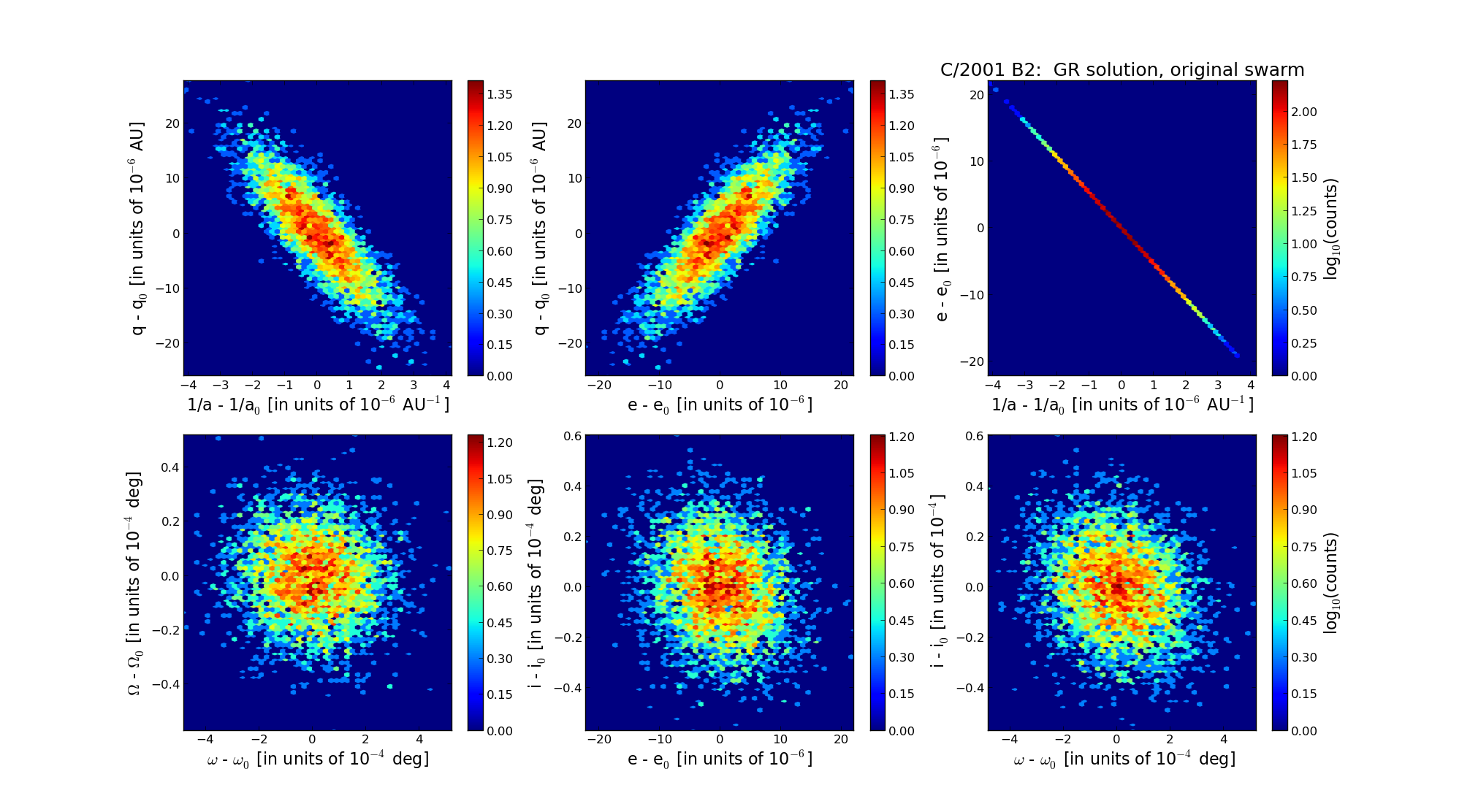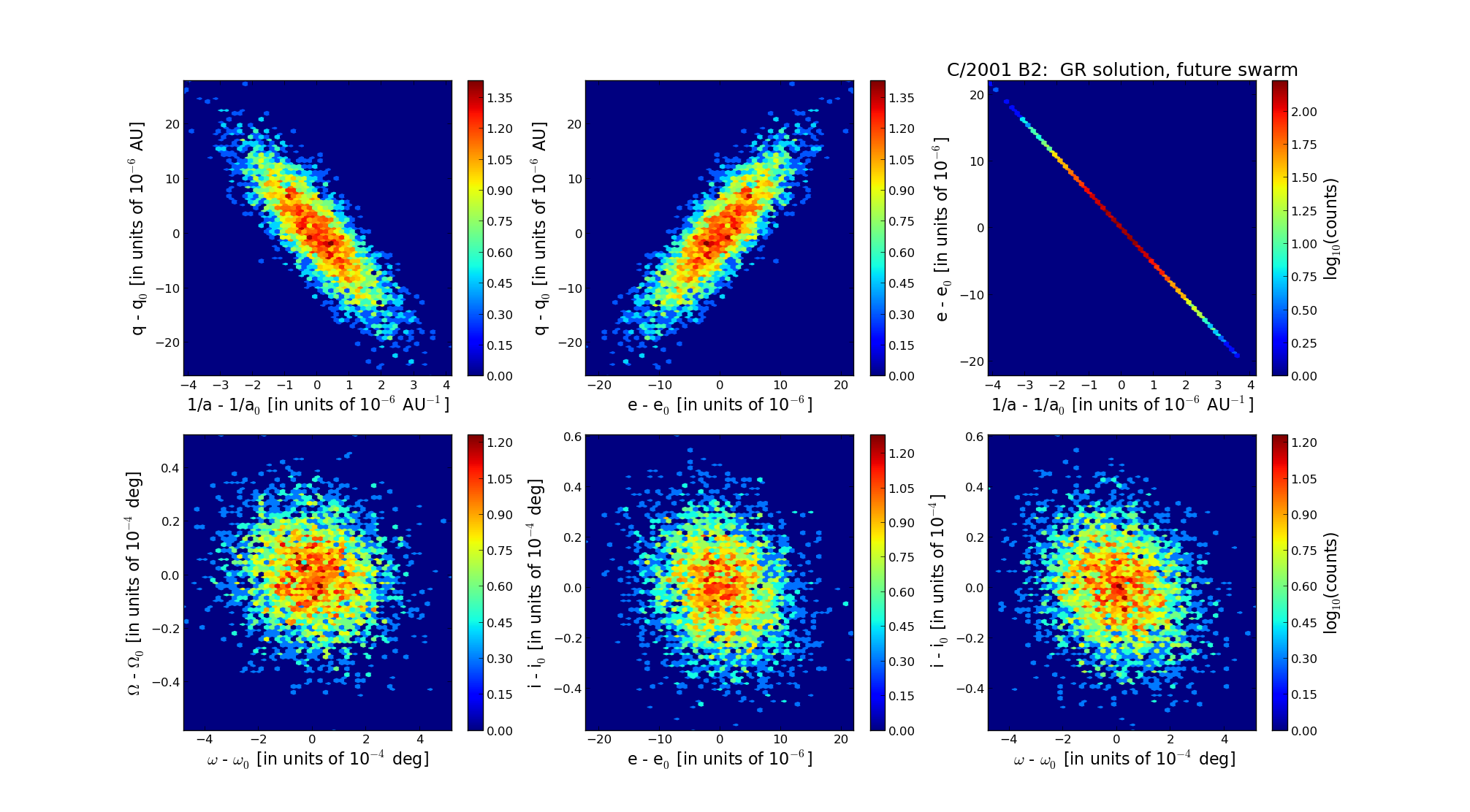| Solar System Dynamics & Planetology Group |
 |
C/2001 B2 NEAT |  |
| Solar System Dynamics & Planetology Group |
 |
C/2001 B2 NEAT |  |
| number of observations | 587 |
| number of residuals | 1153 |
| data interval | 2001 Jan. 24 — 2004 Feb. 21 |
| rms [arcsec] | 0.59 |
| orbit quality class | 1a |
| Epoch (TT) | 20000912.0 | = JD 2451799.5 |
| time of perihelion passage (TT) | 20000901.877987 | ± 0.001172 |
| perihelion distance | 5.30643309 | ± 0.00000768 |
| eccentricity | 1.00294235 | ± 0.00000579 |
| argument of perihelion [deg] | 304.751371 | ± 0.000140 |
| longitude of the ascending node [deg] | 145.084646 | ± 0.000014 |
| inclination [deg] | 150.608868 | ± 0.000016 |
| inverse semimajor axis [10-6 au-1] | -554.49 | ± 1.09 |

| Epoch (TT) | 16920817 | |
| time of perihelion passage (TT) | 20000902.447236 | ± 0.001173 |
| perihelion distance | 5.31118408 | ± 0.00000768 |
| eccentricity | 0.99894149 | ± 0.00000585 |
| argument of perihelion [deg] | 304.818452 | ± 0.000140 |
| longitude of the ascending node [deg] | 145.086621 | ± 0.000014 |
| inclination [deg] | 150.633002 | ± 0.000016 |
| inverse semimajor axis [10-6 au-1] | 199.30 | ± 1.10 |

| Epoch (TT) | 23100312 | |
| time of perihelion passage (TT) | 20000902.334963 | ± 0.001184 |
| perihelion distance | 5.31326984 | ± 0.00000770 |
| eccentricity | 0.99830948 | ± 0.00000585 |
| argument of perihelion [deg] | 304.930487 | ± 0.000140 |
| longitude of the ascending node [deg] | 145.191174 | ± 0.000014 |
| inclination [deg] | 150.680434 | ± 0.000016 |
| inverse semimajor axis [10-6 au-1] | 318.17 | ± 1.10 |